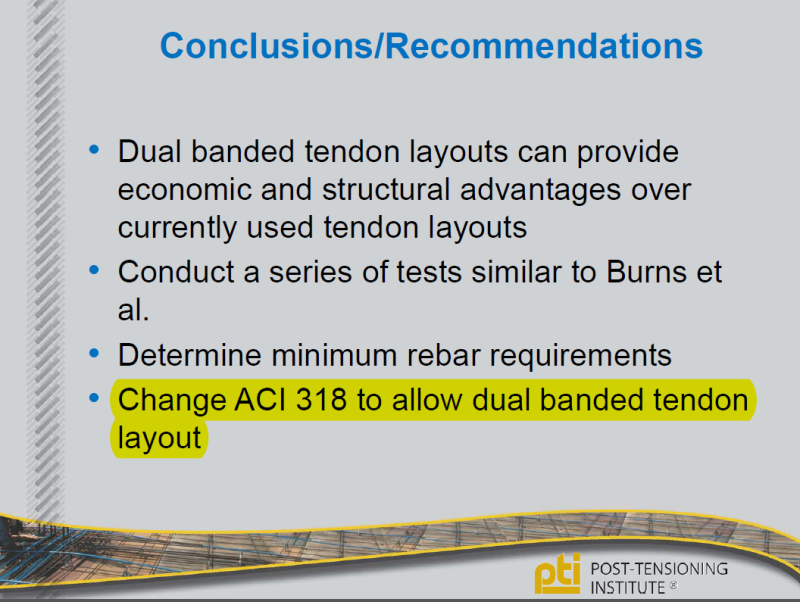OP said:
Does ACI allow for dual banded system in two way PT Floors ?
Not as of ACI 2011. That document states that, for uniform loads, tendons in at least one direction must be spaced at no more than 5' o/c or eight times the slab thickness.
Double banded systems have been used in the past, however, and some folks are interested in bringing them back.
DISADVANTAGES
-Cumbersome to install the "basket weave" approach of old where there was still some amount of uniform tendons.
-Complex to design at irregular slab areas.
-Reduced drape
-Higher tensile stresses in some areas.
-Higher initial stresses
-More prestress "shadow" rebar
ADVANTAGES
-Better punching shear performance.
-Better capacity to transfer moments at columns.
-Lower placement costs for regular slabs and using no distributed tendons at all.
-Easy post construction coring, at least in some spots.
-Potential for incorporating additional technologies such as voided slabs.
In my estimation, the best books are these, in order of preference:
1) Bijan Aalami (
Link)
2) Ken Bondy (
Link)
3) Williams and Kahn (
Link)
For prestress fundamentals, Michael Collins, T.Y. Lin and Ian Gilbert are my favourites. Neither of their books treat post-tensioned systems is as much detail as the others that I listed however.
I like to debate structural engineering theory -- a lot. If I challenge you on something, know that I'm doing so because I respect your opinion enough to either change it or adopt it.


![[mad] [mad] [mad]](/data/assets/smilies/mad.gif) . I will shoot an email to the company and see what the hold up is.
. I will shoot an email to the company and see what the hold up is.